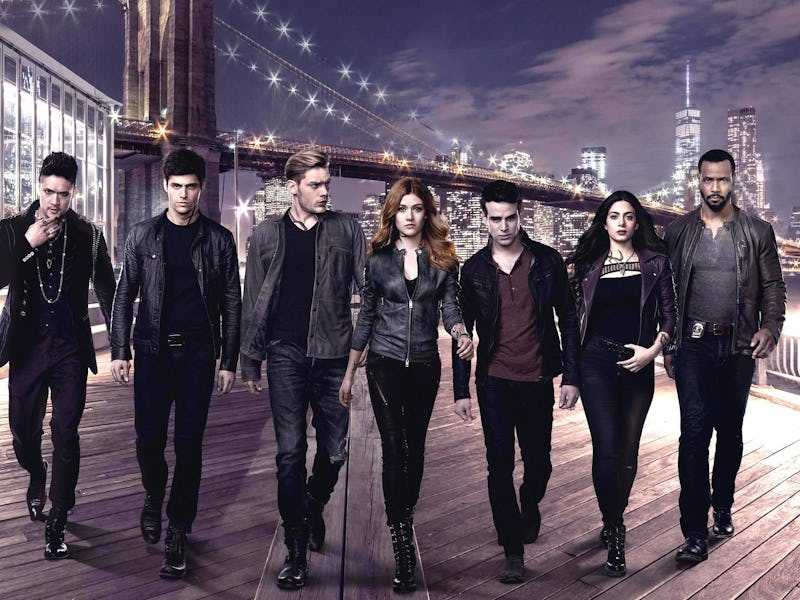'Shadowhunters' Is Way More Inventive Than Most People Realize
'Shadowhunters' builds off shows like 'Buffy' and 'The 100' to engage with modern fandom.

It’s a universal truth that every teen genre show hinges its drama on whether the main characters will make out.
“Shipping,” or fans following a certain romantic pairing in a TV show, does not always make for an enjoyable viewing experience. It can be a subversive way for fans to engage with their favorite shows, but it rarely comes without negative consequences for fans and creators alike. But Freeform’s Shadowhunters has navigated these waters smoothly during its first two seasons. It’s achieved this through an intriguing method: It doesn’t bother trying to stay neutral.
Right from the beginning, the Shadowhunters narrative unabashedly establishes which relationships are ultimately the most important to the story. When the seemingly ordinary human Clary becomes involved in a magical world of demon fighters, the first fighter she meets is a mysterious dude with a trendy haircut.
Jace Wayland in 'Shadowhunters'
As the show proceeds, she and Jace (the fighter) have a rocky relationship. They spend several episodes circling each other only to find out they’re siblings after acknowledging their mutual feelings.
Of course, they aren’t, and Shadowhunters hardly tries to play coy about it. Sure, while Clary thinks Jace is her brother, she dates her friend Simon. But the show doesn’t present the two as equally viable love interests. Jace’s relationship with Clary is tied to the central plot. Simon’s relationship with Clary, on the other hand, is an offshoot from it. His importance to the larger story revolves around his state as a vampire, or Downworlder. Similarly, Shadowhunters makes it clear that the Shadowhunter Alec Lightwood and the Warlock Magnus are its OTP (or One True Pairing, in the language of fandom). Their relationship is presented with the most dramatic weight, like one memorable scene in which Alec stops his own wedding to publicly express his feelings for Magnus.
Magnus and Alec in 'Shadownhunters'
Shadowhunters isn’t afraid to tie its pairings to its plot and frame them with a clear point of view — which makes all the difference. Half the time when shipping gets messy, it’s because a show tries to stay neutral. The 100 tried to have it both ways, presenting Clarke’s political rival Lexa and her short-lived enemy-turned-partner Bellamy as equally important to her emotional growth. The result was a story that displeased both sides. As every classic best friend in a teen drama would say, trying too hard to please everyone results in pleasing no one.
When Season 3 killed Lexa, The 100’s creator, Jason Rothenberg, was forced to write a letter to rightfully angry fans. His apology for killing off a lesbian character wasn’t just about shipping, of course. It was about LGBTQ+ fans feeling betrayed by a character death that embodied a harmful trope.
But the practice of shipping Clarke and Lexa was inextricably tied into the fan backlash. As a result, engaging with the show is a rocky experience for fans, creators, and actors alike. Riverdale, too, has seen some fan support backfire when fans perceived that one actress was dismissing the notion of queerbaiting.
To be a modern teen drama, a show must understand the complicated interplay between its story and its social media conversations on platforms like Twitter and Tumblr. It’s no longer possible for a show to exist in a vacuum. Shadowhunters seems aware of this — perhaps partly because the show is the third incarnation of this story, after a book series and a 2013 movie.
This isn’t to say its overall story and execution is superior to The 100 or Riverdale. But in presenting its story and pairings with a clear perspective, it’s ahead of the game in understanding the cycle between a show and its fandom.
Shadowhunters Season 2B premieres June 5 on Freeform.